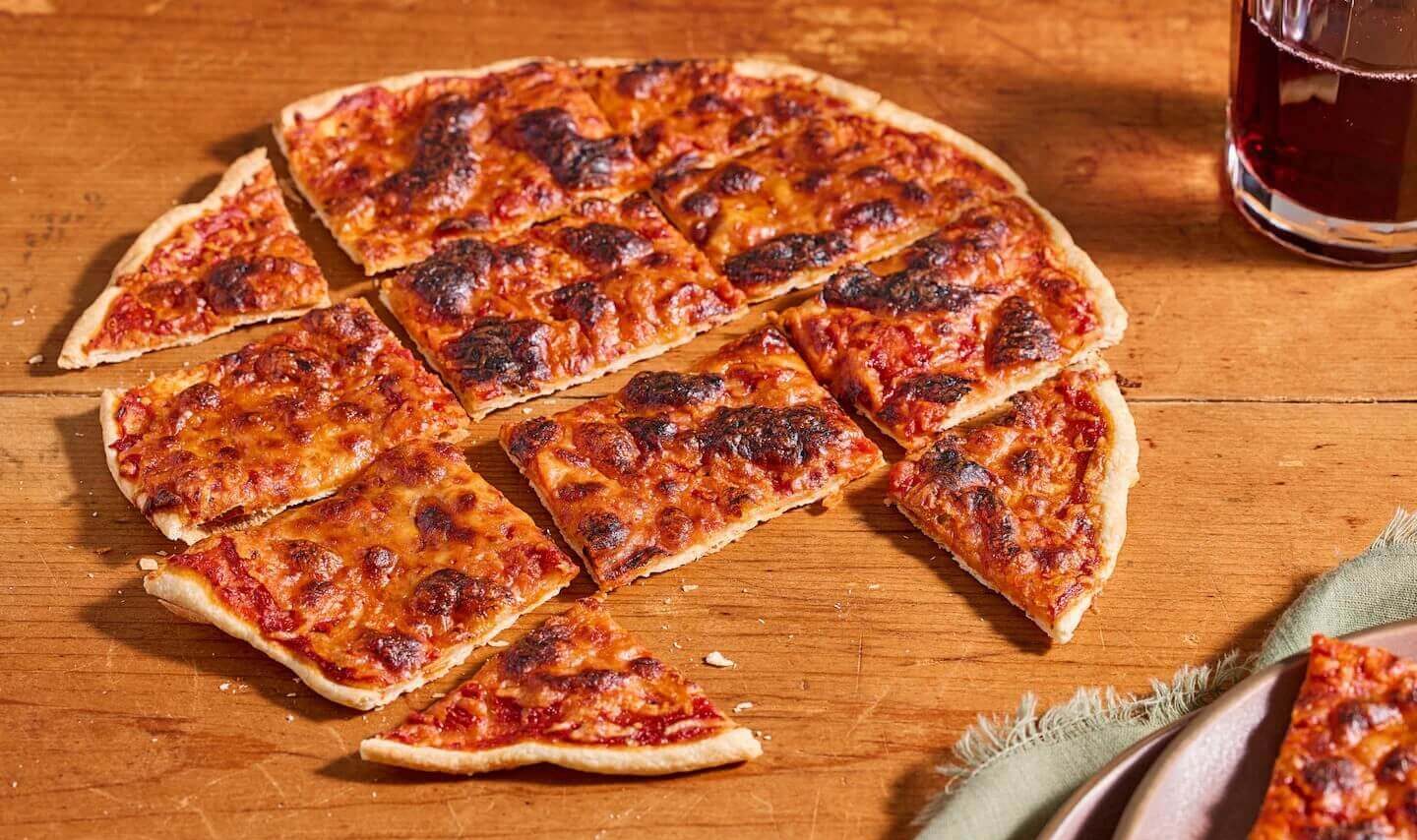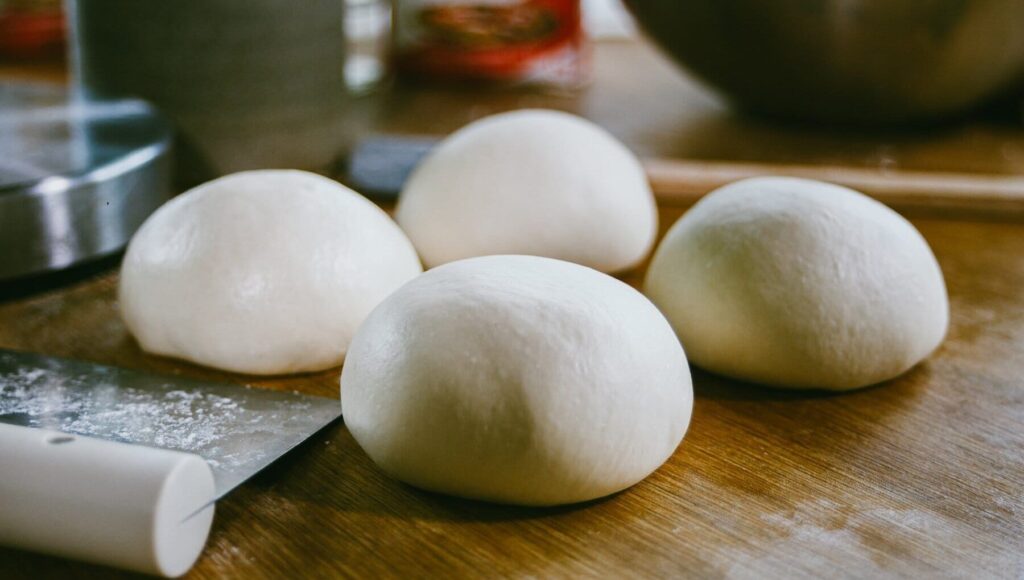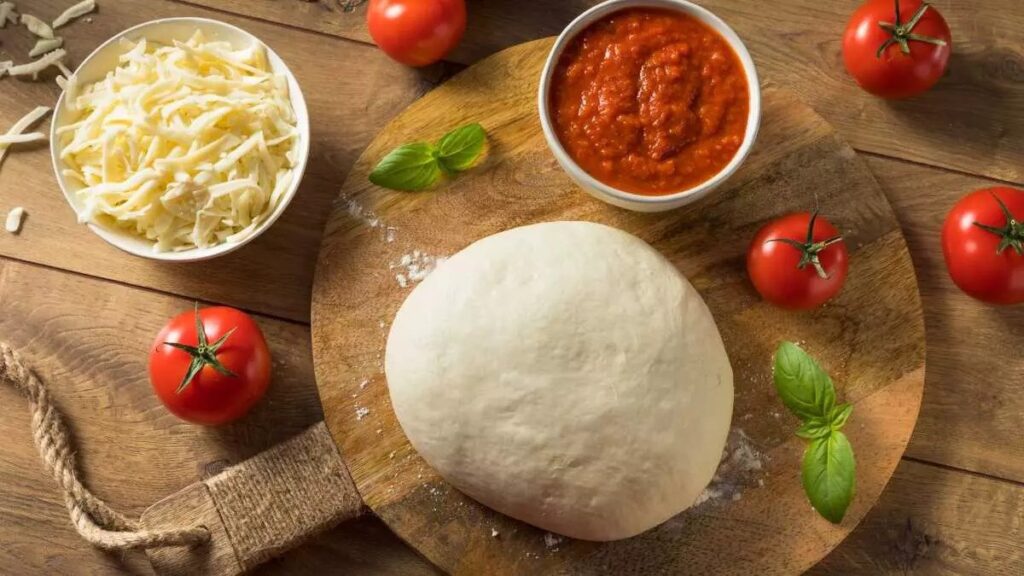Making thin crust pizza at home has become a favorite for pizza lovers who enjoy crispy textures, balanced toppings, and a lighter bite than traditional thick crusts.
With the right techniques and a few simple ingredients, it’s easier than you might think to achieve restaurant-quality results right from your own oven.
Unlike deep-dish or pan pizzas, thin crust pizza focuses on a crisp and slightly chewy base that complements rather than overwhelms the toppings. It’s a style that originated in Italy and has been adopted around the world for its delicate texture and fast baking time.
One of the best parts of preparing thin crust pizza yourself is the ability to customize everything—from the type of flour you use to the balance of sauce, cheese, and toppings.
Whether you’re aiming for a traditional Margherita or experimenting with new flavors, this guide will give you everything you need to make your first slice a success.
Let’s dive into the process, from choosing the right ingredients to baking tips that deliver a golden, crackling finish.
Essential Ingredients For Authentic Thin Crust Pizza
You don’t need a long list of ingredients to make great thin crust pizza. In fact, simplicity is often what makes it perfect. Below are the core items:
-
3 cups all-purpose or bread flour (higher protein = better texture)
-
1 cup lukewarm water
-
1 tsp dry yeast
-
1 tsp salt
-
1 tsp sugar
-
2 tbsp olive oil
For the sauce:
-
1/2 cup tomato puree
-
1 minced garlic clove
-
1 tsp oregano
-
Salt and pepper to taste
The toppings should be light and fresh. Think fresh mozzarella, basil leaves, cherry tomatoes, olives, or thinly sliced mushrooms. The beauty of thin crust pizza lies in restraint—overloading the surface will compromise the crispness of the crust.
Use freshly grated cheese rather than pre-shredded, which often contains anti-caking agents that affect melt quality. And always opt for ripe, well-drained ingredients.
How To Achieve The Perfect Dough Texture
The secret to a truly great thin crust pizza is in the dough. Start by combining the yeast, sugar, and water and letting it rest for 10 minutes until foamy. Mix in the flour, salt, and olive oil, then knead the dough for at least 8 to 10 minutes until it becomes smooth and elastic.
Allow the dough to rest in a warm place, covered, for about an hour or until it doubles in size. This fermentation process creates flavor and allows for the right gluten development.
After resting, divide the dough into balls (depending on how many pizzas you want), and let them rest again briefly before rolling out.
When rolling the dough, use a floured surface and a light touch. The goal is a round, even base about 2–3 mm thick. Avoid overworking it or pressing too hard, which can lead to a tough result. You want a dough that crisps without becoming brittle.
Rolling it out too thick means it won’t crisp well; too thin, and it may break under toppings. That sweet spot is key in successful thin crust pizza making.
Thin Crust Pizza Baking Tips For A Crispy Finish
High heat is essential for thin crust pizza. Preheat your oven to its highest setting—ideally 250°C (480°F) or higher—and let a pizza stone or heavy baking tray heat up inside the oven for 30 minutes.
Place your prepared pizza on parchment paper and slide it directly onto the hot surface. Bake for 7–10 minutes until the edges are golden, and the cheese bubbles with light brown spots. The crust should be crispy but not burnt.
A pizza peel helps with transferring the dough, but a cutting board or the back of a baking tray works too. If you have a broiler setting, finish the top for 1–2 minutes to caramelize the cheese slightly—this gives it a pizzeria-like finish.
The timing and heat level might need adjustment based on your oven. If the crust is cooking faster than the toppings, pre-cook some heavier toppings like mushrooms or sausage before placing them on your thin crust pizza.
Creative Sauce And Topping Combinations
Once you master the base, it’s time to get creative with flavors. The classic combo is tomato sauce, fresh mozzarella, and basil. But thin crust pizza also works beautifully with white sauces, pesto, or even olive oil and garlic as a base.
Some flavorful topping combinations to try:
-
Goat cheese, caramelized onions, and arugula
-
Pesto, grilled chicken, and sun-dried tomatoes
-
Ricotta, lemon zest, and spinach
-
Spicy salami with roasted red peppers
Keep in mind that the goal of thin crust pizza is balance. Use fewer toppings in smaller amounts. Overloading the crust not only prevents it from crisping up properly, but it also masks the flavor of the dough.
Drizzling a touch of olive oil before or after baking can also enhance the flavor and texture of your creation.
Common Mistakes When Making Thin Crust Pizza At Home
There are a few mistakes that can ruin your thin crust pizza even if your ingredients are perfect. One is skipping the resting time for dough. Without enough rest, the gluten remains tight and hard to roll out thin.
Another common issue is soggy crust. This happens when you overload the pizza with too much sauce or wet toppings like fresh tomatoes or mushrooms. Always drain ingredients or pre-cook them lightly to reduce moisture.
Using too little oven heat is also a major pitfall. A lukewarm oven won’t give you the necessary crispness. Always let the oven fully preheat and bake your thin crust pizza at maximum heat for the best results.
Lastly, don’t forget to adjust your timing if you’re using a different flour or humidity is high. Dough can be sensitive to small changes, and practice helps you learn what your environment demands.
See you in the next post,
Anil UZUN


